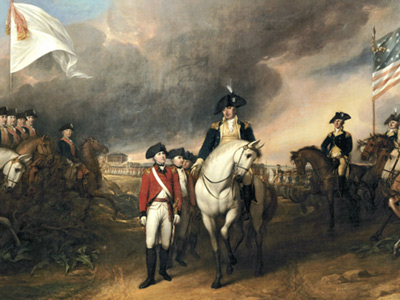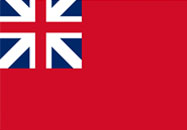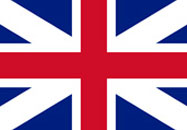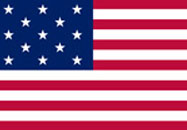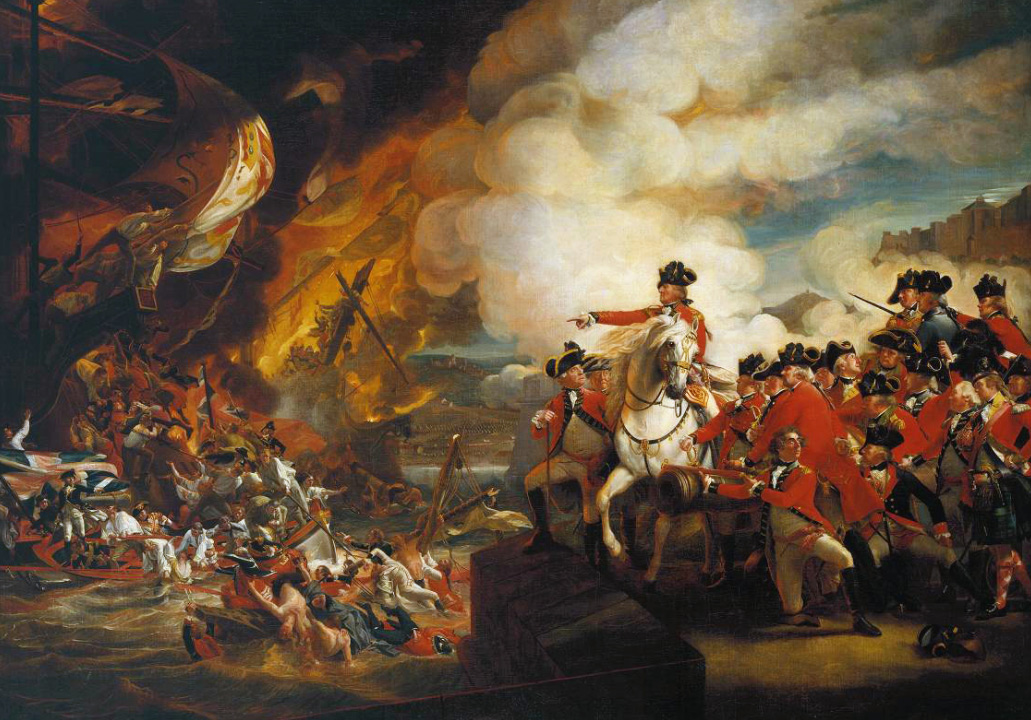American Revolutionary War (1775–1783)
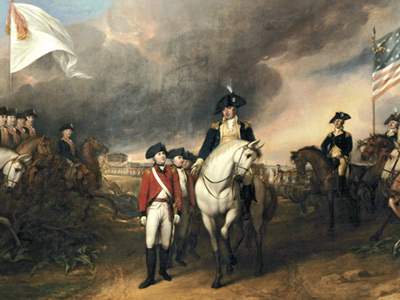
Foreign Intervention
The defeat at Saratoga caused considerable anxiety in Britain over foreign intervention. The North ministry sought reconciliation with the colonies by consenting to their original demands, although Lord North refused to grant independence. No positive reply was received from the Americans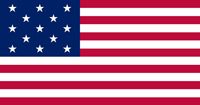 The United States of America (USA), is a country in North America. The American Revolutionary War (April 19, 1775 - September 3, 1783) was the military conflict in which American patriot forces under George Washington's command defeated the British, establishing and securing the independence of the United States. After the Revolution, the United States gained independence, the first nation-state founded on Enlightenment principles of liberal democracy..
The United States of America (USA), is a country in North America. The American Revolutionary War (April 19, 1775 - September 3, 1783) was the military conflict in which American patriot forces under George Washington's command defeated the British, establishing and securing the independence of the United States. After the Revolution, the United States gained independence, the first nation-state founded on Enlightenment principles of liberal democracy..
French foreign minister the Comte de Vergennes was strongly anti-British, and he sought a casus belli to go to war with and weaken their perennial foe following the conquest of Canada in 1763. The French had covertly supplied the Americans through neutral Dutch ports since the onset of the war, proving invaluable throughout the Saratoga campaign. The French public favored war, though Vergennes and King Louis XVI were hesitant, owing to the military and financial risk. The American victory at Saratoga convinced the French that supporting the Patriots was worthwhile, but doing so also brought major concerns. The King was concerned that Britain's concessions would be accepted, and that she would then reconcile with the Colonies to strike at French and Spanish possessions in the Caribbean. To prevent this, France The Kingdom of France is the historiographical name or umbrella term given to various political entities of France in the medieval and early modern period. It was one of the most powerful states in Europe since the High Middle Ages. It was also an early colonial power, with possessions around the world. Colonial conflicts with Great Britain led to the loss of much of its North American holdings by 1763. The Kingdom of France adopted a written constitution in 1791, but the Kingdom was abolished a year later and replaced with the First French Republic. formally recognized the United States on February 6, 1778 and followed with a military alliance. France aimed to expel Britain
The Kingdom of France is the historiographical name or umbrella term given to various political entities of France in the medieval and early modern period. It was one of the most powerful states in Europe since the High Middle Ages. It was also an early colonial power, with possessions around the world. Colonial conflicts with Great Britain led to the loss of much of its North American holdings by 1763. The Kingdom of France adopted a written constitution in 1791, but the Kingdom was abolished a year later and replaced with the First French Republic. formally recognized the United States on February 6, 1778 and followed with a military alliance. France aimed to expel Britain The Kingdom of Great Britain was a sovereign country in Western Europe from 1 May 1707 to the end of 31 December 1800. The state was created by the 1706 Treaty of Union and ratified by the Acts of Union 1707, which united the kingdoms of England (which included Wales) and Scotland to form a single kingdom encompassing the whole island of Great Britain and its outlying islands, with the exception of the Isle of Man and the Channel Islands. from the Newfoundland fishery, end restrictions on Dunkirk sovereignty, regain free trade in India, recover Senegal and Dominica, and restore the Treaty of Utrecht provisions pertaining to Anglo-French trade.
The Kingdom of Great Britain was a sovereign country in Western Europe from 1 May 1707 to the end of 31 December 1800. The state was created by the 1706 Treaty of Union and ratified by the Acts of Union 1707, which united the kingdoms of England (which included Wales) and Scotland to form a single kingdom encompassing the whole island of Great Britain and its outlying islands, with the exception of the Isle of Man and the Channel Islands. from the Newfoundland fishery, end restrictions on Dunkirk sovereignty, regain free trade in India, recover Senegal and Dominica, and restore the Treaty of Utrecht provisions pertaining to Anglo-French trade.
Spain The Spanish Empire was a colonial empire governed by Spain and its predecessor states between 1492 and 1976. One of the largest empires in history, it was the first to usher the European Age of Discovery and achieve a global scale, controlling vast territory. It was one of the most powerful empires of the early modern period, reaching its maximum extent in the 18th century. was wary of provoking war with Britain before she was ready, so she covertly supplied the Patriots via her colonies in New Spain. Congress hoped to persuade Spain into an open alliance, so the first American Commission met with the Count of Aranda in 1776. Spain was still reluctant to make an early commitment, owing to a lack of direct French involvement, the threat against their treasure fleets, and the possibility of war with Portugal, Spain's neighbor and a close ally of Britain. However, Spain affirmed its desire to support the Americans the following year, hoping to weaken Britain's empire. In the Spanish-Portuguese War (1776-77), the Portuguese threat was neutralized. On 12 April 1779, Spain signed the Treaty of Aranjuez with France and went to war against Britain. Spain sought to recover Gibraltar and Menorca in Europe, as well as Mobile and Pensacola in Florida, and also to expel the British from Central America.
The Spanish Empire was a colonial empire governed by Spain and its predecessor states between 1492 and 1976. One of the largest empires in history, it was the first to usher the European Age of Discovery and achieve a global scale, controlling vast territory. It was one of the most powerful empires of the early modern period, reaching its maximum extent in the 18th century. was wary of provoking war with Britain before she was ready, so she covertly supplied the Patriots via her colonies in New Spain. Congress hoped to persuade Spain into an open alliance, so the first American Commission met with the Count of Aranda in 1776. Spain was still reluctant to make an early commitment, owing to a lack of direct French involvement, the threat against their treasure fleets, and the possibility of war with Portugal, Spain's neighbor and a close ally of Britain. However, Spain affirmed its desire to support the Americans the following year, hoping to weaken Britain's empire. In the Spanish-Portuguese War (1776-77), the Portuguese threat was neutralized. On 12 April 1779, Spain signed the Treaty of Aranjuez with France and went to war against Britain. Spain sought to recover Gibraltar and Menorca in Europe, as well as Mobile and Pensacola in Florida, and also to expel the British from Central America.
Meanwhile, George III had given up on subduing America while Britain had a European war to fight. He did not welcome war with France, but he believed that Britain had made all necessary steps to avoid it and cited the British victories over France in the Seven Years' War as a reason to remain optimistic. Britain tried in vain to find a powerful ally to engage France, leaving it isolated, preventing Britain from focusing the majority of her efforts in one theater, and forcing a major diversion of military resources from America. Despite this, the King determined never to recognize American independence and to ravage the colonies indefinitely, or until they pleaded to return to the yoke of the Crown. Mahan argues that Britain's attempt to fight in multiple theaters simultaneously without major allies was fundamentally flawed, citing impossible mutual support, exposing the forces to defeat in detail.
Since the outbreak of the conflict, Britain had appealed to her ally, the neutral Dutch Republic The Dutch Republic was a confederation that existed from 1579, during the Dutch Revolt, to 1795. It was a predecessor state of the Netherlands and the first fully independent Dutch nation state. Although the state was small and contained only around 1.5 million inhabitants, it controlled a worldwide network of seafaring trade routes. The income from this trade allowed the Dutch Republic to compete militarily against much larger countries. It amassed a huge fleet of 2,000 ships, initially larger than the fleets of England and France combined., to loan her the use of the Scots Brigade for service in America, but pro-American sentiment among the Dutch public forced them to deny the request. Consequently, the British attempted to invoke several treaties for outright Dutch military support, but the Republic still refused. Moreover, American troops were being supplied with ordnance by Dutch merchants via their West Indies colonies. French supplies bound for America had also passed through Dutch ports. The Republic maintained free trade with France following France's declaration of war on Britain, citing a prior concession by Britain on this issue. Britain responded by confiscating Dutch shipping, and even firing upon it. Consequently, the Republic joined the First League of Armed Neutrality to enforce their neutral status. The Republic had also given sanctuary to American privateers and had drafted a treaty of commerce with the Americans. Britain argued that these actions contravened the Republic's neutral stance and declared war in December 1780.
The Dutch Republic was a confederation that existed from 1579, during the Dutch Revolt, to 1795. It was a predecessor state of the Netherlands and the first fully independent Dutch nation state. Although the state was small and contained only around 1.5 million inhabitants, it controlled a worldwide network of seafaring trade routes. The income from this trade allowed the Dutch Republic to compete militarily against much larger countries. It amassed a huge fleet of 2,000 ships, initially larger than the fleets of England and France combined., to loan her the use of the Scots Brigade for service in America, but pro-American sentiment among the Dutch public forced them to deny the request. Consequently, the British attempted to invoke several treaties for outright Dutch military support, but the Republic still refused. Moreover, American troops were being supplied with ordnance by Dutch merchants via their West Indies colonies. French supplies bound for America had also passed through Dutch ports. The Republic maintained free trade with France following France's declaration of war on Britain, citing a prior concession by Britain on this issue. Britain responded by confiscating Dutch shipping, and even firing upon it. Consequently, the Republic joined the First League of Armed Neutrality to enforce their neutral status. The Republic had also given sanctuary to American privateers and had drafted a treaty of commerce with the Americans. Britain argued that these actions contravened the Republic's neutral stance and declared war in December 1780.
HISTORY
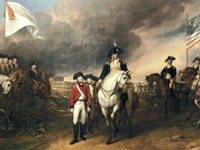
RESOURCES
This article uses material from the Wikipedia article "American Revolutionary War (1775–1783)", which is released under the Creative Commons Attribution-Share-Alike License 3.0.
© Stories Preschool. All Rights Reserved.
